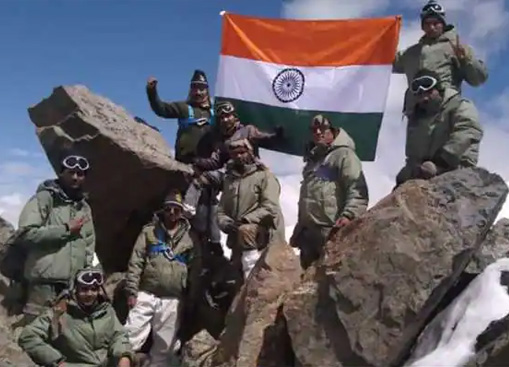Kargil Vijay Diwas 2022: Kargil Vijay Diwas is observed in India to commemorate the sacrifices made by Indian Army soldiers during the Kargil War in 1999. It has been 23 years since the war. The Indian Army fought Pakistan in the Kargil sector of Jammu and Kashmir, which is now Ladakh, during ‘Operation Vijay.’
Kargil Vijay Diwas is celebrated on July 26 because it was on this day in 1999 that Indian troops achieved victory over Pakistani rangers after nearly three months of armed battles on the icy heights of Kargil.
The Kargil War, also known as the Kargil conflict, took place between May and July 1999 in the Kargil district of Jammu and Kashmir along the Line of Control (LoC), and India won. As a result, the day is dedicated to the Kargil war’s martyred soldiers.
This is the day to remember the Kargil martyrs and the supreme sacrifice made by our brave soldiers to uphold and safeguard the nation’s integrity.
Facts about Kargil Vijay Diwas
1. The Kargil War occurred in Jammu and Kashmir’s Kargil District, along the Line of Control (LoC). During the winter, Pakistan’s army sent soldiers in the guise of intruders to take over the area. Their main goal was to cut the links between Ladakh and Kashmir and to instill fear at the Indian border. Let us explain that the intruders were on top at the time, while the Indians were on the downhill, making it easy for them to attack. Finally, the war between the two sides erupted. Pakistani soldiers crossed the Line of Control, or LOC, and entered India-controlled territory.
2. On May 3, 1999, Pakistan launched this war after infiltrating into the high altitudes of the rocky mountainous region of Kargil with approximately 5000 soldiers and capturing it. When the Indian government learned about it, the Indian army launched ‘Operation Vijay’ to evict the intruders who had treacherously occupied Indian territory.
3. The origins of the war: There have been numerous military conflicts since the 1971 Indo-Pak war. Both countries conducted nuclear tests in 1998, further escalating tensions. To defuse the situation, the two countries signed The Lahore Declaration in February 1999, promising a peaceful and bilateral solution to the Kashmir conflict.
4. However, the Pakistani Armed Forces began sending soldiers and paramilitary forces across the Line of Control into Indian territory, and the infiltration was codenamed “Operation Badr.” Do you know that its main goal was to cut the link between Kashmir and Ladakh and to remove the Indian Army from the Siachen Glacier? At the same time, Pakistan believed that escalating tensions in this area would help turn the Kashmir issue into an international issue, allowing it to secure a quick resolution.
5. The IAF used MiG-2Is, MiG-23s, MiG-27s, Jaguars, and Mirage-2000s for ground attack. MiG-21 was designed primarily for air interception with a secondary role in ground attack. MiG-23s and 27s were modified to attack ground targets. Several Pakistani targets were attacked. As a result, the IAF’s MiG-21s and Mirage 2000s saw extensive use during Operation Safed Sagar.
6. During this war, a large number of rockets and bombs were used. Approximately 250,000 shells, bombs, and rockets were fired. Every day, approximately 5,000 artillery shells, mortar bombs, and rockets were fired from 300 guns, mortars, and MBRLs, with 9,000 shells fired the day Tiger Hill was reclaimed.
According to legend, this was the only war after World War II in which such a large number of bombardments were launched against the enemy army. Finally, India won a determined victory.
It is not incorrect to say that the War is never good. This results in significant losses on both sides, with thousands of soldiers being martyred. India is a country that believes in peace and does not believe in war. The Indian army always protects the country from foreign forces, makes sacrifices for the Motherland, and makes us proud.
Source:JJ







 Finance
Finance







